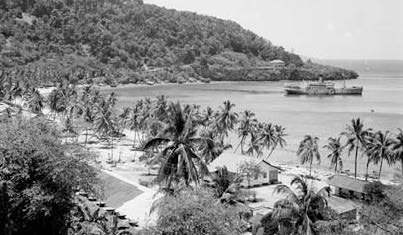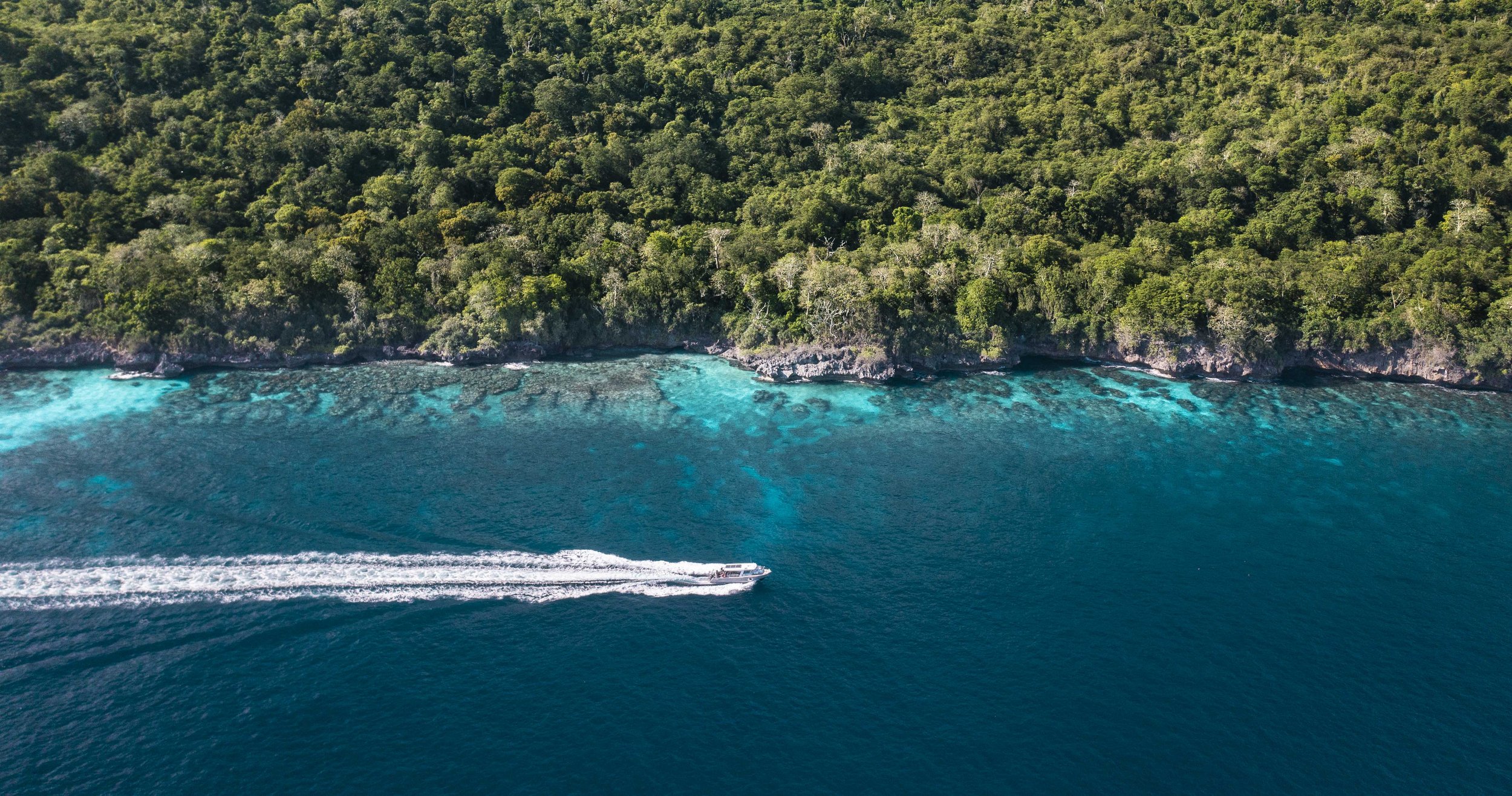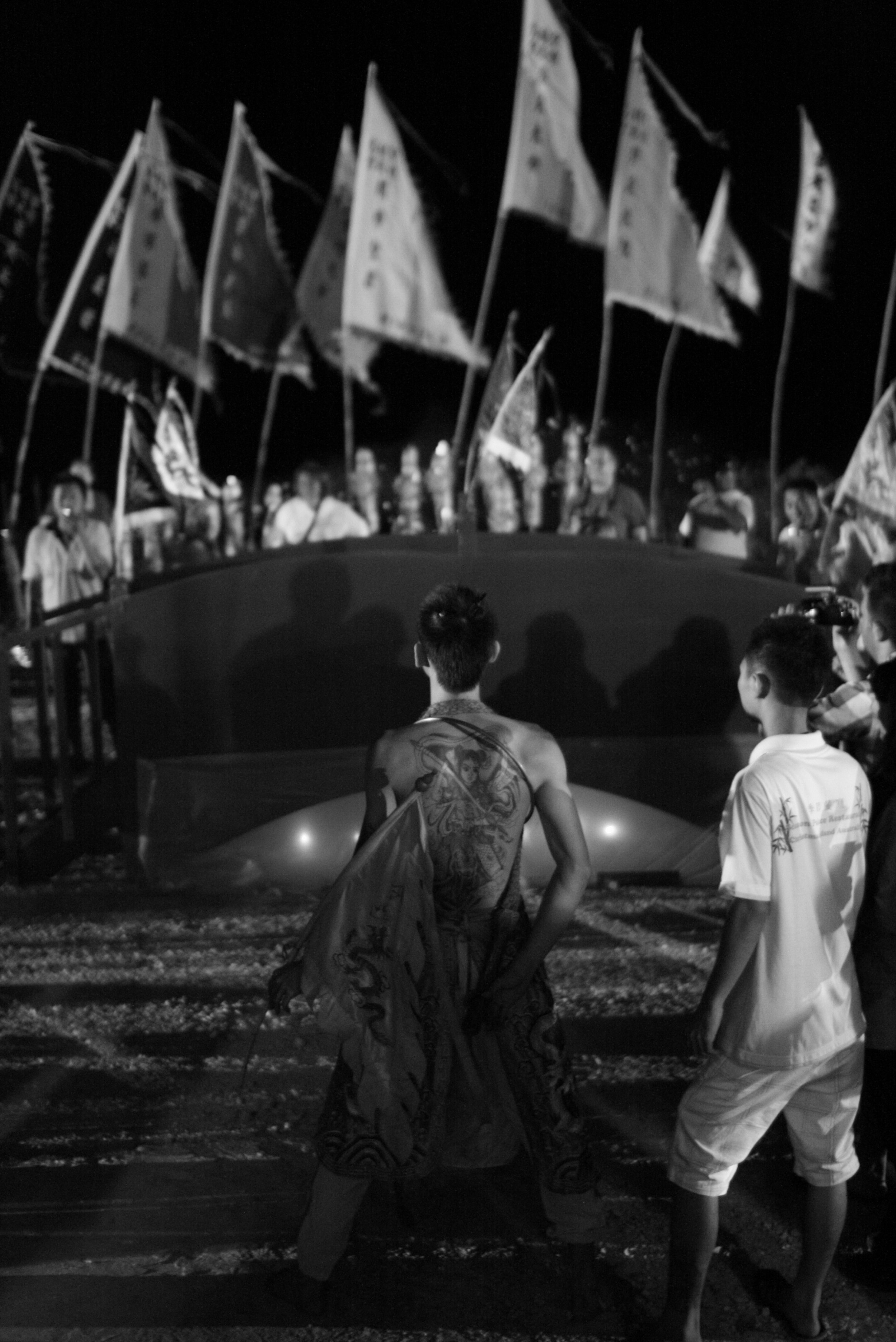
CHRISTMAS ISLAND HISTORY
Behind the laid-back multicultural ambience of Christmas Island today lies a fascinating and sometimes turbulent history.
It was the discovery of phosphate in 1888 which was to guide the island’s destiny for the next century. It’s a story of two men, George Clunies Ross and John Murray, and their quest to reap the rewards of phosphate with an imported workforce of Chinese, Malays and Sikhs, who often endured appalling conditions. The signs remain today of the island’s WWII history including a restored gun emplacement. You can also see glimpses of the Japanese invasion and occupation, when islanders and allied submarines successfully sabotaged the mine effort and hundreds of islanders were then shipped to Japanese prisoner of war camps in Indonesia.
Britain took possession of the Island in the name of Queen Victoria, but in 1946 it was placed under the jurisdiction of the Crown Colony of Singapore. In 1958, Britain transferred sovereignty to Australia, and the Island was made an Australian Territory.
As well as the info on this page, you may also like the website, Christmas Island Archives, which has further history articles & images about Christmas Island.
-
25 December 1643 Captain William Mynors on the East Indian Company vessel, the Royal Mary, sees and names the Island on Christmas Day.
1857 Crew of the vessel Amethyst tires to explore the island, but are hampered by inland cliffs and dense jungle.
1887 A party from British naval vessel HMS Egeria reach the summit of what is now Murray Hill, finding phosphate as predicted by Scottish naturalist, Dr John Murray, and in a nearly pure form.
6 June 1888 Great Britain annexes Christmas Island at the urging of John Murray.
1888 George Clunies-Ross, owner of the Cocos (Keeling) Islands sends his brother Andrew and a small party of Cocos Malay workers to form a settlement at Flying Fish Cove to pre-empt any other claim to the island’s resources.
1891 Britain offers rivals Murray and Clunies-Ross a joint phosphate lease for 99 years.
1897 The rival claimants are induced to form the Christmas Island Phosphate Company.
1898 200 Chinese labourers, eight European managers and five Sikh policemen arrive on the island to make up workforce, supplemented by a small number of Malays.
1900 First major shipment of phosphate.
1900-1904 550 die from beri-beri, most of them Chinese.
1908 CW Andrews of the British Museum conducts a comprehensive study of the island’s natural history, following on from his earlier study in 1989.
1914-1918 During World War I phosphate mining was reduced and a rail link from Settlement to South Point built.
1929 The TSS Islander II, a tin screw steamer, was built and remained the islands transport and supply ship until 1960.
6 February 1942 A carley float carrying a body was rescued in Flying Fish Cove. The body was prepared and then buried in the European Cemetery. He was believed to have been from the HMAS Sydney and is now recognised as The Unknown Sailor.
1942 Japanese attack the Norwegian phosphate ship “The Eidsvold” in Flying Fish Cove; 50 Asian and Australian families are evacuated to Perth.
March 1942 – 1945 900 Japanese troops invade and occupy Christmas Island, imprisoning remaining Europeans and hunting 1000 Malay and Chinese workers in the jungle. Islander sabotage and allied submarines lead to suspension of mining. In 1943, half the population is sent to prison camps in Indonesia when food runs low.
1949 Australia and New Zealand buy the Christmas Island Phosphate company and Christmas Island is administered by the Colony of Singapore.
1950’s Population expands, with labour from Singapore, Malaya and Cocos and supervisors from Australia
1957 The Australian Government paid 2.9 million pounds to Singapore for lost phosphate royalties.
1 October 1958 Sovereignty is transferred by the United Kingdom to Australia and Christmas Island becomes an Australian Territory.1970’s Union of Christmas Island Workers formed to improve living and working conditions on the Island.
1977 First Government Conservator from the Australian National Parks and Wildlife Service appointed after conflicts between mining and conservation.
1980 The first National Park declared over Egeria Point area.
1986 and 1989 Christmas Island National Park extended to cover 63% of the Island.
-
For centuries, Christmas Island’s isolation and rugged coasts provided natural barriers to settlement. British and Dutch navigators first included the island on their charts from the early seventeenth century, and Captain William Mynors of the East India Ship Company vessel, the Royal Mary, named the island when he arrived on Christmas Day, 25th December, 1643. He was unable to land, however, and it was not until 1688, when the English buccaneering ship Cygnet arrived under Captain Swan, that the first recorded landing took place.
In his book “New Voyage Round the World” (1699), Dampier, who was second mate or master’s mate, recounted how crewmen landed on the west coast (probably at The Dales) and brought back on board large Robber Crabs (Birgus latro) to eat and wood for a pump. This was the first recorded landing on Christmas Island. During the 1872-76 HMS ‘Challenger’ oceanographic expedition around the world, naturalist Dr John Murray collected many mineral specimens, including some from the sea-bed adjoining the Netherlands East Indies (now Indonesia). He predicted that phosphate deposits would be found on an island in the area. British Navy landings on Christmas Island in 1887 confirmed his prediction, and, at his urging, Britain annexed the Island on 6 June 1888.
In November 1888 George Clunies-Ross, owner of the Cocos (Keeling) Islands some 900 kilometres to the south west, sent his brother Andrew and a small party of Cocos Malay workers to form a settlement at Flying Fish Cove to pre-empt any other claim to the Island’s resources. Timber was exported to Cocos and experimental planting took place – none of it successful.
Sources: William Dampier: A New Voyage Round the World (1699) H L Burstyn: ‘Science Pays Off: Sir John Murray and the Christmas Island Phosphate Industry’ 1886-1914. Social Studies of Science 1975 Public Record Office, England Colonial Office Correspondence/Straits Settlements.
-
The Christmas Island Phosphate Company found it difficult to re-establish their operations at the profitable pre-war levels. Australia and New Zealand had become their biggest customers, and on 31 August 1948 their Governments entered into an Agreement to purchase the Company and all its assets. This was given effect by the Christmas Island Agreement Act of 1949. The two Governments employed the British Phosphate Commissioners (BPC), who already mined Ocean Island and Nauru, as their managing agents to run the Christmas Island operation. A massive expansion of infrastructure capacity followed; recruitment of labour from Singapore, Malaya and the Cocos (Keeling) Islands expanded the population; and increasingly the supervisory staff were recruited from Australia. The Island was administered as part of the Colony of Singapore, with a resident District Officer and staff.
Christmas Island SettlementThe United Kingdom had embarked on a de-colonisation process in the period following the Second World War, and the Australian Government expressed interest in acquiring Christmas Island from the UK, just as it had acquired the Cocos (Keeling) Islands in 1955. Agreement was reached, and on 1 January 1958, Christmas Island was excised from the Colony of Singapore and made a separate Crown Colony.
The Second Reading Speech in the Australian Parliament on 30 September 1958 for the Christmas Island Agreement Bill included the following: “The principal item in this connexion is the ex gratia payment of approximately 2,800,000 pounds to the Singapore Government to compensate for the loss of revenue from royalties and rent, which were applied to Singapore when the island was a British Colony.”
On 1 October of the same year, sovereignty was transferred from the UK to the Commonwealth of Australia. 1 October is still celebrated as Territory Day. The Christmas Island Act 1958 provides the basis of the Territory’s administration, and an Administrator, appointed by the Governor-General of Australia, resides on the Island.
Sources: Public Record Office, England Colonial Office Correspondence/Colony of Singapore
Australian Archives: Department of Territories Correspondence Parliamentary Debates, Commonwealth of Australia 1948-58 (especially 30/9/58 pages 1753-4)
Christmas Island Annual Report 1985-86 AGPS page 4
Barrie Macdonald and Maslyn Williams: The Phosphateers 1985 pp 440-443
-
Dramatic social and political changes occurred in the 1970’s with the unionisation of the mine workers.
The Union of Christmas Island Workers, “The Union”, remains a strong force in island politics today, and, in conjunction with the Sweetland Enquiries of 1980 and 1982, has been responsible for dramatic improvements in living and working conditions. Also in the 1970’s, conflicts between conservation and mining interests led to the company appointing a conservation officer in 1974. This was followed in 1977 by the appointment of a Government Conservator from the Australian National Parks and Wildlife Service.
In 1980, a National Park was declared in the Egeria Point area. The National Park now covers over 63% of the island. Around this time, Australia and New Zealand Governments re-negotiated their agreement for provision of phosphate to the two countries. As part of this process, the British Phosphate Commissioners relinquished the management of the mine to the newly formed Phosphate Mining Company of Christmas Island (PMCI). As deposits of preferred quality phosphate neared exhaustion, the mining operation faced economic constraints and probable closure. Initial steps in this direction were two generous redundancy schemes in 1984 and 1986.
The Government created the Christmas Island Services Corporation to relieve the mining operation of community services such as housing, domestic roads, street lighting, swimming pools and cinemas. 1984 also saw the benefits of Australian Citizenship extended to the island in the form of social service benefits and voting in Commonwealth elections. Taxation was also introduced. The effects of drought and low phosphate prices led to a Government decision to close the mine in December 1987.
Historical account to 1958 by J G Hunt
-
Murray in England and George Clunies-Ross on Cocos became rivals for control of the phosphate deposits. The British Government offered them a joint 99 year lease in return for a small royalty.
Exploration by the Clunies-Rosses showed that the deposits were enormous, and samples sent to England proved to be of high quality. In 1897 the rival claimants were induced to form the Christmas Island Phosphate Company and the lease was transferred to this commercial body. In 1899 Andrew Clunies-Ross and his party returned to Cocos just as the first imported labour arrived.
Chinese coolie labour and a small number of Malays and Sikhs operated under European supervision. The first commercial exports of phosphate were sent to Japan and Germany in January 1900. By 1901 the Island population had taken shape: 640 Chinese, a dozen Sikh policemen, 20 Malay boatmen and pony-handlers, a British CIP Co Island Manager, engineers and trade supervisors and a Chinese-speaking British District Officer from the Straits Settlements with a clerk/interpreter.
The rush to take advantage of high world phosphate prices led the Company to cut corners, and a serious outbreak of beri-beri, caused by vitamin deficiency, led to almost 550 deaths from the disease, almost all coolies, in the period 1900-04. Conditions were eventually improved and the mining operation began to flourish in the period up till the First World War, with Japan the biggest customer.
Sources: Public Record Office, England Colonial Office Correspondence/Straits Settlements
John Hunt: ‘Reaction to Mistreatment of Chinese Coolie on Christmas Island 1900-04’ Litt, B thesis, ANU 1982
-
From the outbreak of war in South East Asia in December 1941, Christmas Island was a target for Japanese occupation because of its rich phosphate deposits. A naval gun was installed under a British officer and four NCOs supported by Indian soldiers.
The first attack was by a Japanese submarine that torpedoed a Norwegian vessel, the Eidsvold, loading phosphate in Flying Fish Cove. This was on 21 January 1942. The vessel drifted and eventually sank off West White Beach. 50 European and Asian staff and their families were evacuated to Perth. In late February and early March 1942, two aerial bombing raids and shelling from the sea led the District Officer to hoist the white flag. After the Japanese naval group sailed away the British officer raised the Union Jack once more. During the night of 10 – 11 March, a mutiny of the Indian troops, abetted by the Sikh policemen, led to the murder of the five British soldiers and the imprisonment of the remaining 21 Europeans.
On 31 March a Japanese fleet of 9 vessels arrived and the Island was surrendered. A naval brigade, phosphate engineers and 700 marines came ashore and rounded up the workforce, most of whom had fled to the jungle. Sabotaged equipment was repaired and preparations were made to resume the mining and export of phosphate.
Isolated acts of sabotage and the torpedoing of the Nissei Maru at the wharf on 17 November 1942 meant that only small amounts of phosphate were exported to Japan during the occupation. In November 1943, over 60% of the Island’s population was evacuated to Surabayan prison camps, leaving of total population of just under 500 Chinese and Malays and 15 Japanese to survive as best they could. In October 1945 HMS Rother reoccupied Christmas Island.
Sources: Public Record Office, England War Office and Colonial Office Correspondence/Straits Settlements
J. Pettigrew: ‘Christmas Island in World War II ‘ Australian Territories January 1962
Interviews conduced by J G Hunt with Island residents, 1973-77
Correspondence J G Hunt with former Island residents, 1973-79
tai jin house
The majestic Tai Jin House, a grand colonial edifice, once served as the residence of the British Administrator on Christmas Island. Situated on the edge of a sea cliff, it has breathtaking views of Flying Fish Cove and the boundless Indian Ocean beyond. Today, Tai Jin House has been transformed into a captivating museum that narrates the rich history of Christmas Island, from its initial discovery and European settlement in 1898 to its contemporary status. The museum’s permanent exhibition intricately details the island's eventful past, marked by drama as vivid as its dramatic landscapes and unique wildlife. Surrounding Tai Jin House, the gardens have become a venue for community gatherings or simply for visitors to enjoy the stunning panoramas. A short walk from Territory Day Park leads to Tai Jin House, and venturing beyond it reveals historical defenses including a naval gun and buildings erected during World War II to safeguard Christmas Island. Embarking on a visit to Tai Jin House offers more than just a glimpse into the island's history; it's an opportunity for an intriguing day trip, inviting visitors to explore the depth of Christmas Island's heritage set against the backdrop of its dramatic natural beauty.
christmas island Stories
Discover the heart of Christmas Island and journey through its stories. Christmas Island Stories is a unique initiative that celebrates the vibrant tapestry of life on one of Australia's most enchanting islands. Christmas Island Stories’ purpose is to showcase the connection to the Island, to preserve, share, and honor the authentic narratives that define the spirit of Christmas Island. Watch the captivating videos and embark on a journey to explore the rich mosaic of cultures and stories that make Christmas Island a treasure trove of cultural harmony.

CHRISMAS ISLAND ITINERARIES.
How to experience the best Christmas Island has to offer... from wandering to secluded stretches of paradise and encountering those bucket list wildlife moments, to taking the plunge to depths you’ve never ventured.





